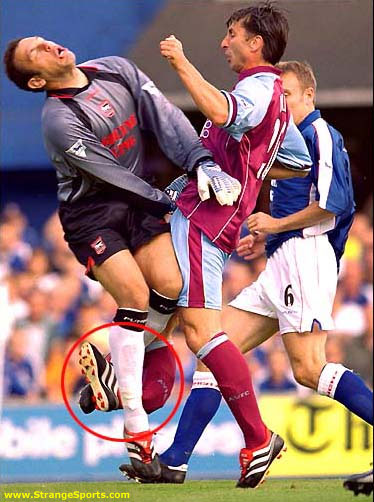 A strained muscle, sprained ankle or foot injury can make even the most motivated exerciser feel discouraged when it comes to working out.
A strained muscle, sprained ankle or foot injury can make even the most motivated exerciser feel discouraged when it comes to working out.But being injured doesn’t necessarily mean you can’t exercise, says Colleen Greene, wellness coordinator with MFit, the University of Michigan Health System’s health promotion division. By speaking with an expert and finding a plan that will work as you heal, you can still hit the gym while recovering.
“Exercise can definitely be beneficial for a person dealing with an injury. Depending on its type, the injured area should be moved and not left in place for a long period of time,” explains Greene. “Some people think they should just rest and not move at all with an injury. Doing that can actually be worse because—depending on the amount of time one does not move the appendage— the muscle might begin to atrophy.”
Greene notes that the general rule of thumb when initially handling an injury is to follow RICE—Rest, Ice, Compression and Elevation. Once you have done this, consult a doctor to look at the injury as soon as possible. You may be referred to a physical therapist or specialist trainer if the injury is severe enough. These professionals can provide guidance for your recovery, as well as give you tips on how to maintain strength while recovering.
Greene also notes that there are “dos and don’ts” when it comes to specific injuries. Because each condition is unique, there are certain things a person can do and other activities the injured person should avoid while healing. She offers these tips on three common injuries:
General advice for any injury: See a physician or physical therapist to learn what exercises are possible with your type of injury. Focus on the goal of maintaining strength, not gaining it, while you are recovering. And always be wary of pain as you explore different workouts.
“Pain is always the indicator; discomfort is OK, but pain tells you when you should stop what you are doing and do something else,” Greene says. “You always want to keep in mind that you should be doing something that doesn’t re-injure or further injure yourself.”
Sprained ankle. When seeking out cardiovascular exercises, Greene suggests sticking with low- impact workouts, such as swimming or riding a stationary bike. She notes that running or aerobics are generally activities that are too high in impact. A person with a sprained ankle can also do upper-body or core impact exercises for strength training.

Plantar faciitis. Plantar faciitis is an overuse injury normally caused by a lack of cross training. For example, a person may develop plantar faciitis by only running when training for a marathon, but not preparing through other exercises, such as swimming or biking. Greene notes that people dealing with this type of injury need to focus on resting in order to heal, but it is possible to explore low-impact core and upper-body exercises while recovering.
“There are not a lot of ways other than physical therapy to recover from plantar faciitis except for resting,” she says. “You want to do things that are low impact without a lot of pressure on the area.”
Grab an ice pack, get some rest and allow your injury to fully recover before trying to get stronger.
Strained and pulled muscle. “The first thing a person with a pulled or strained muscle should know is that they, like everyone, should warm up thoroughly before doing anything,” Greene notes.
She also says that people with this type of injury should stay in a pain-free range by focusing on conditioning the side of the body opposite of the strained or torn muscle. If you have pulled a hamstring, for example, then aim to work on your upper-body.
Greene also notes that there are preventative measures that a person can take to avoid pulling or training a muscle. First, Greene recommends a good warm-up for five to 10 minutes. Second, be sure to cool down at the end of your workout. And don’t forget to stretch.
“We find that as people age, they can actually pull muscles by doing everyday things such as bending over to grab a bag of groceries or leaning over to put something on a shelf,” she explains. “So the preventative measures that can be taken to avoid pulling or tearing a muscle with exercise are also measures that should be taken to avoid tearing or pulling a muscle in everyday life, not just on a basketball court.”
Overall, Greene believes the most important thing injured exercisers can do when hitting the gym is to pay attention to their body. She also advises to stop immediately if a workout becomes painful.
“One of the basic exercise myths is ‘no pain, no gain.’ We used to think that a long time ago,” says Greene. “If you are actually in pain, you should stop immediately. Now we say, ‘no discomfort, no gain.’ There is a big difference.”
—————————-
Article adapted by MD Sports from original press release.
—————————-
MFit, the Health Promotion Division of the University of Michigan Health System (UMHS) provides medically-based personalized health and wellness programs and services to UMHS patients, UM employees, the greater Washtenaw County community, and employers in Michigan.
Source: Laura Drouillard
University of Michigan
Get Strong! Stay Strong!
Chris
No comments:
Post a Comment